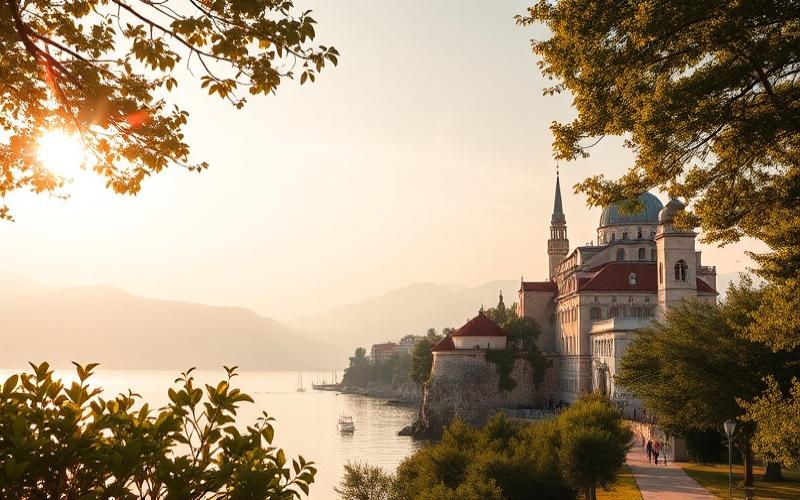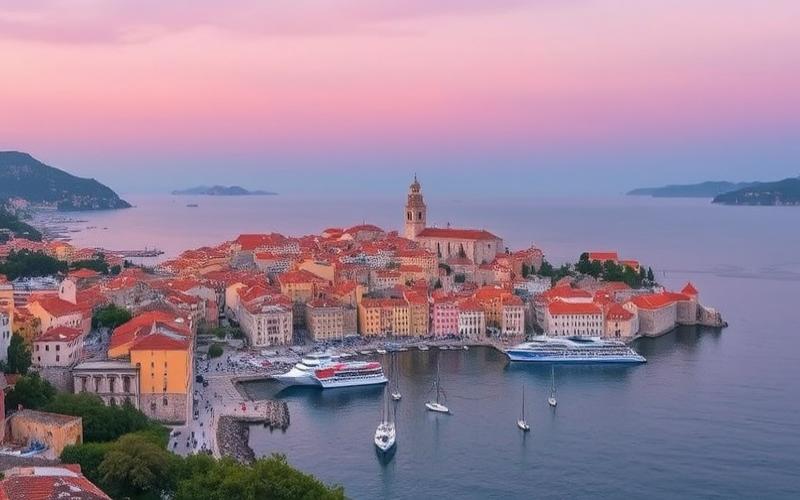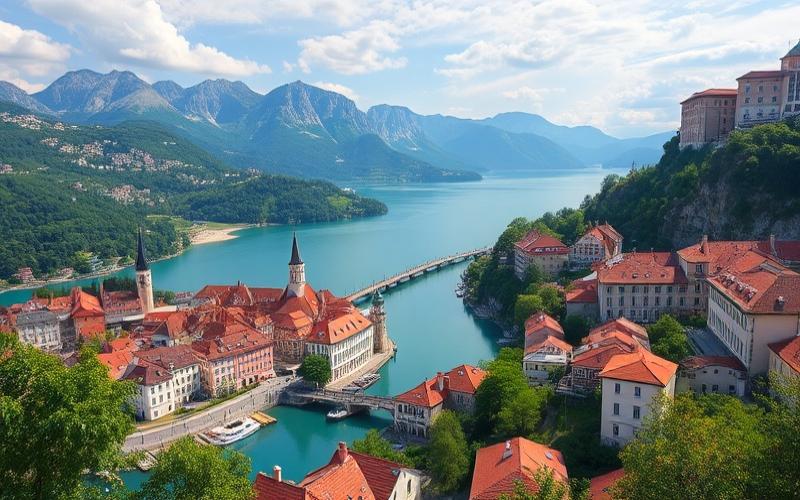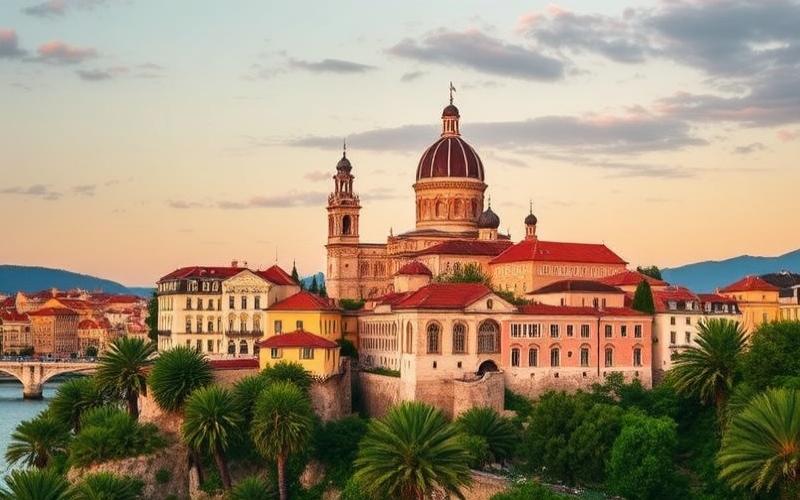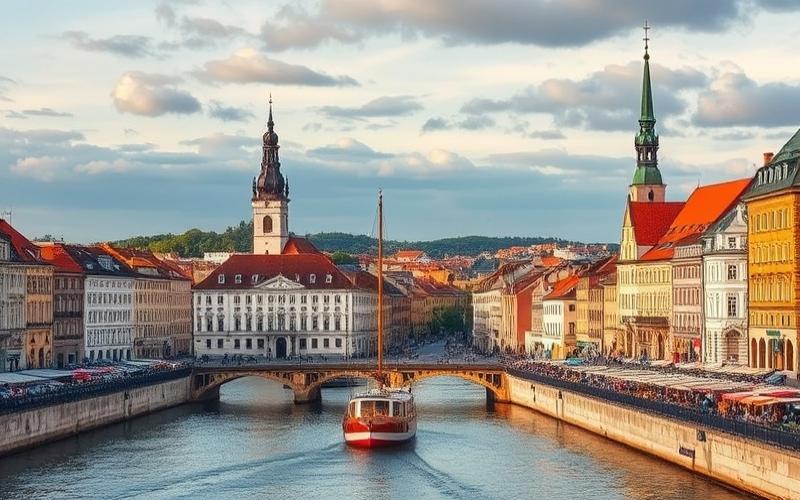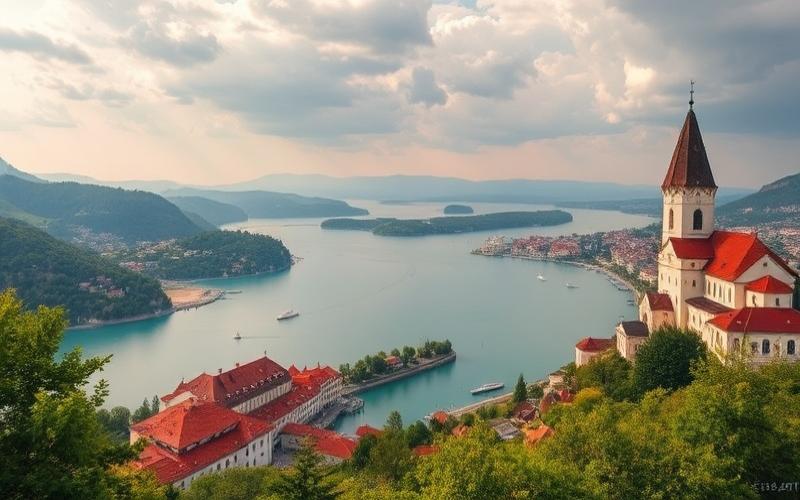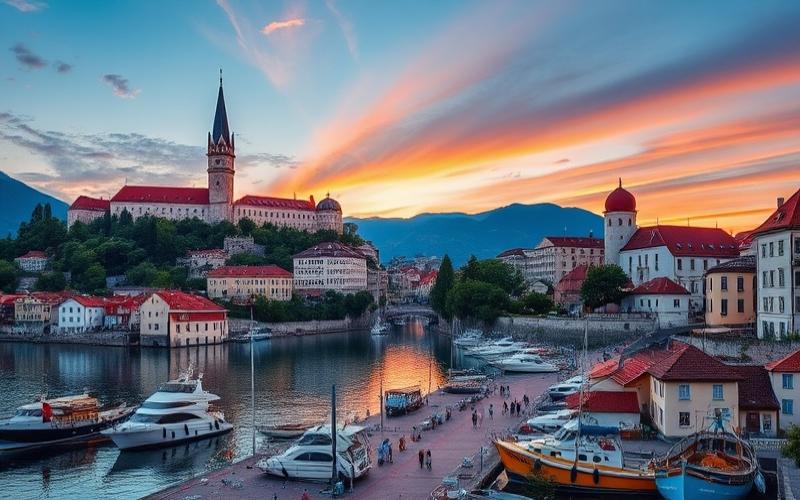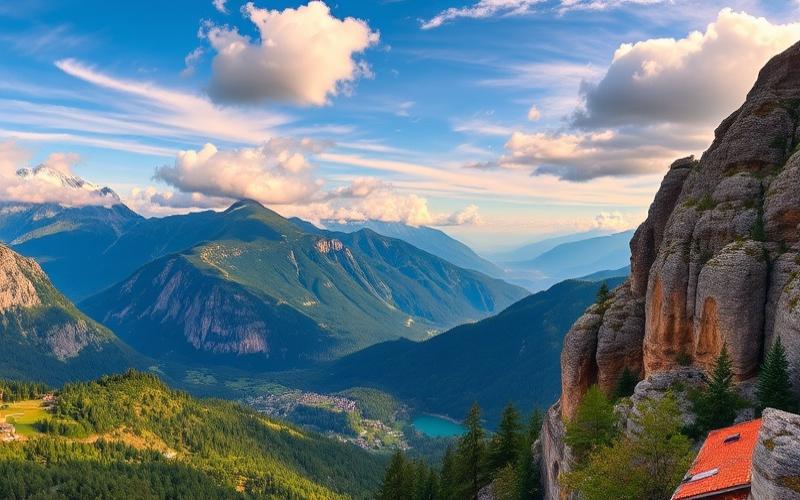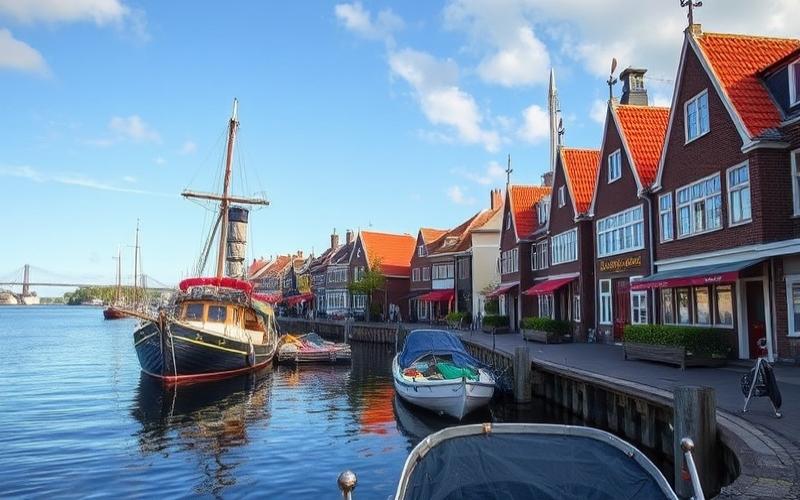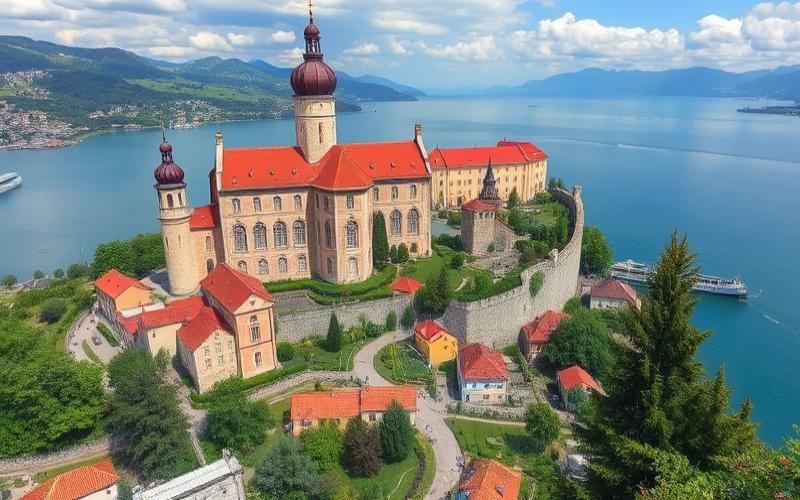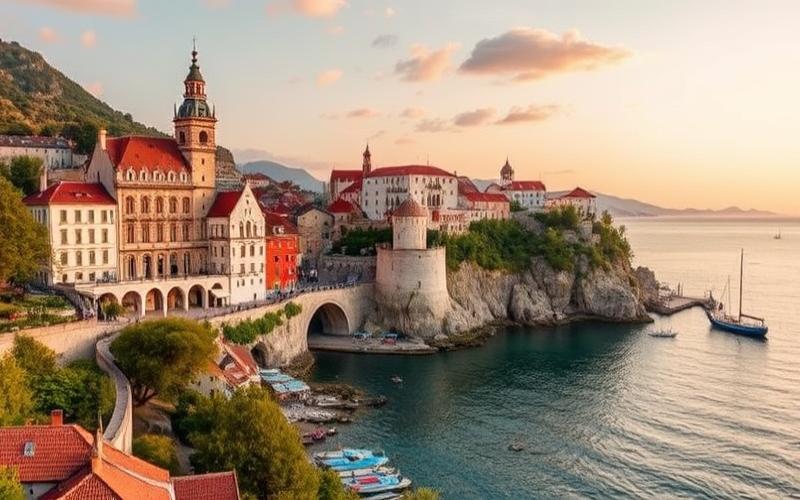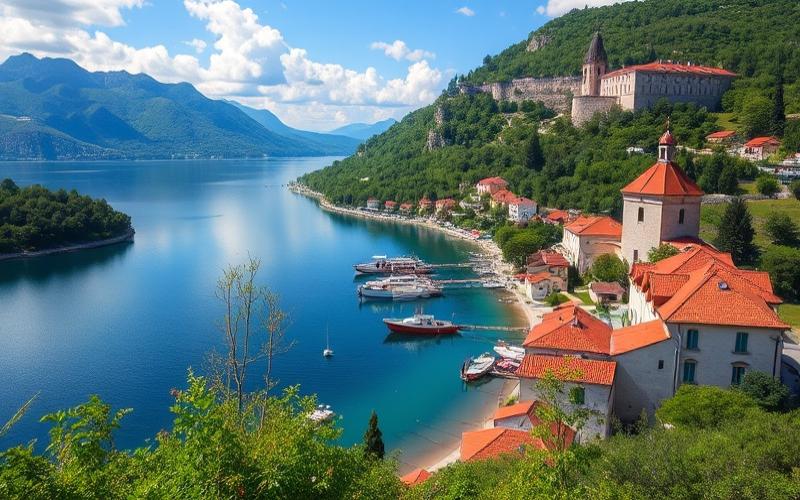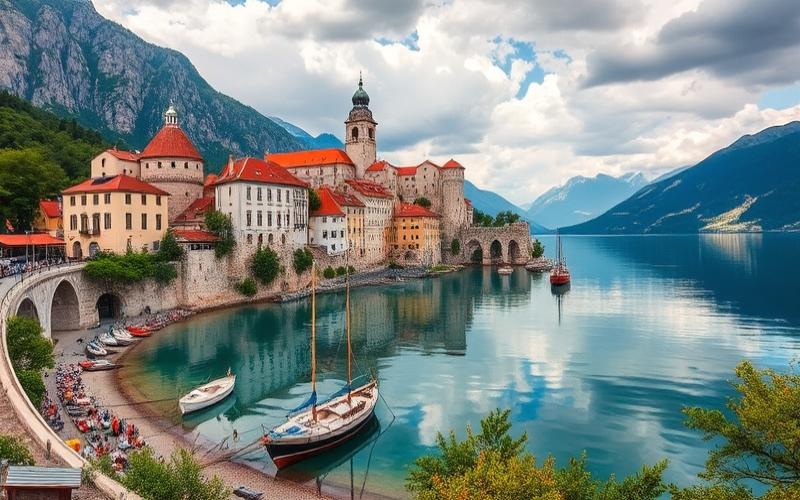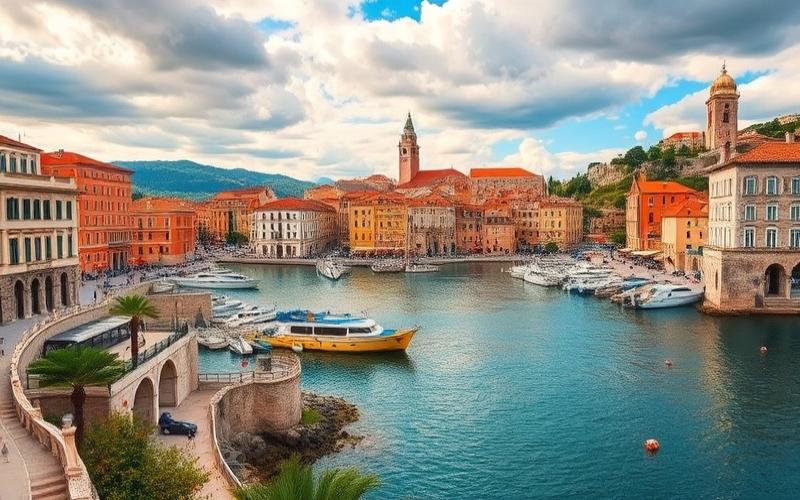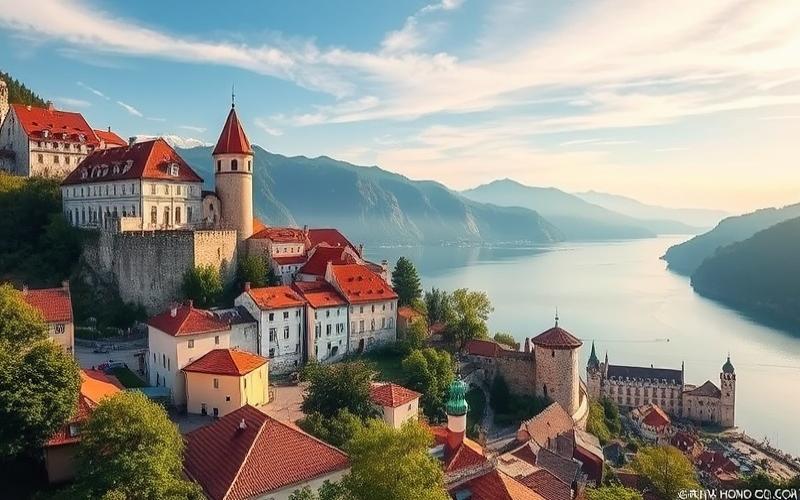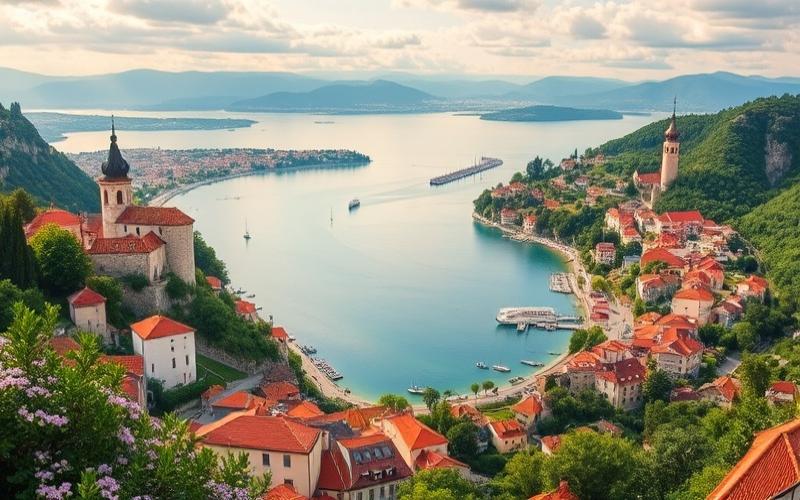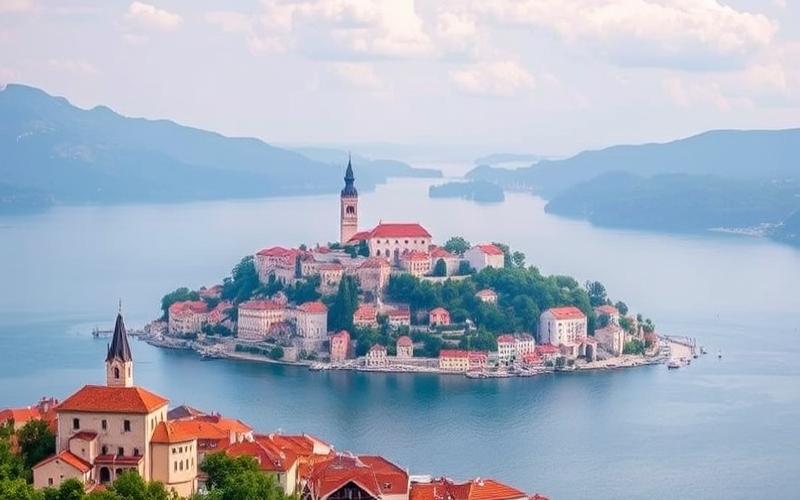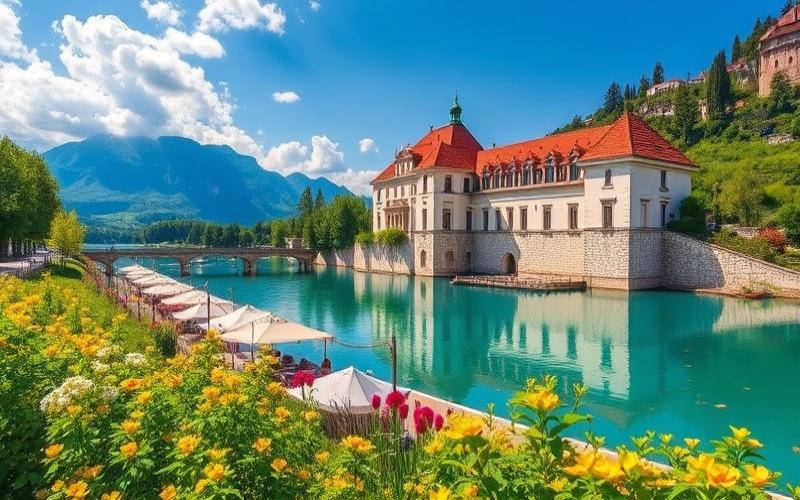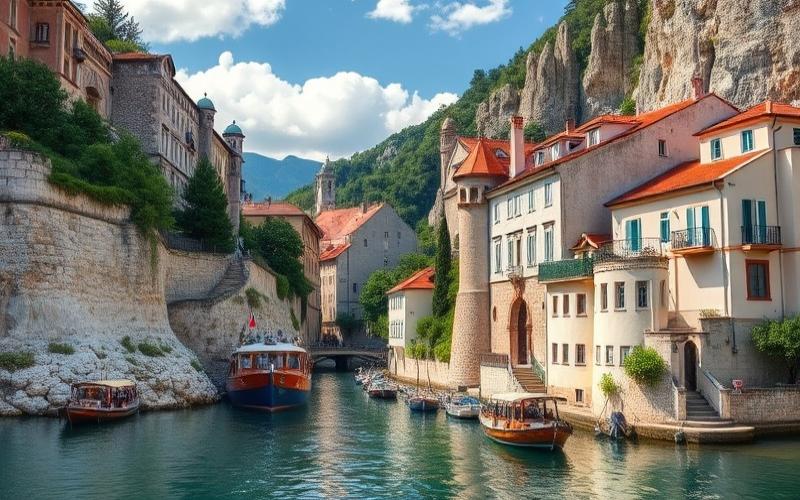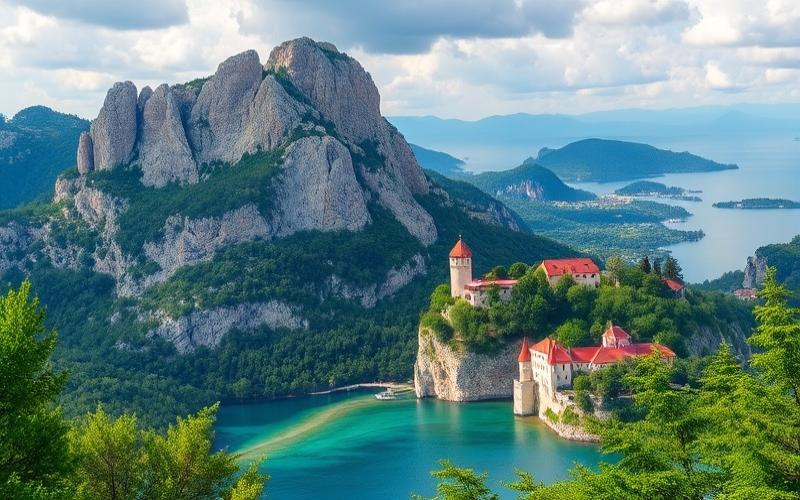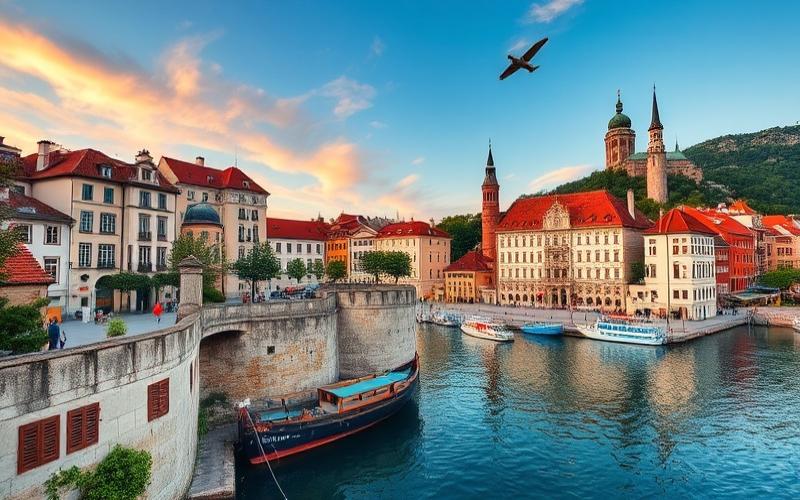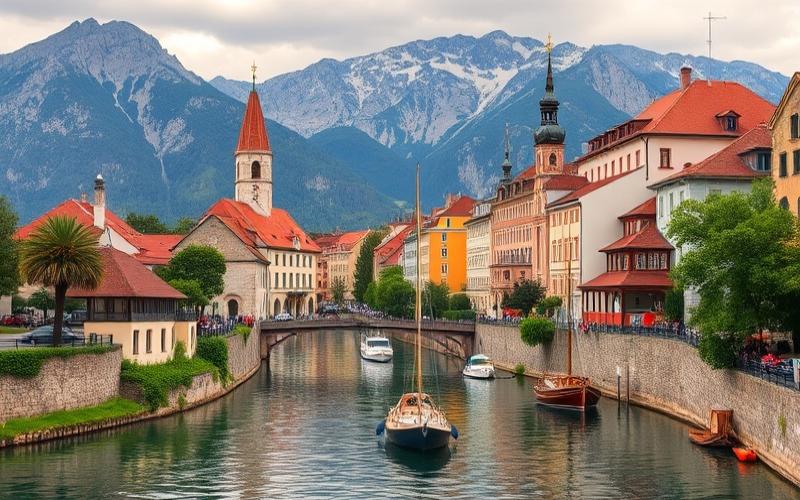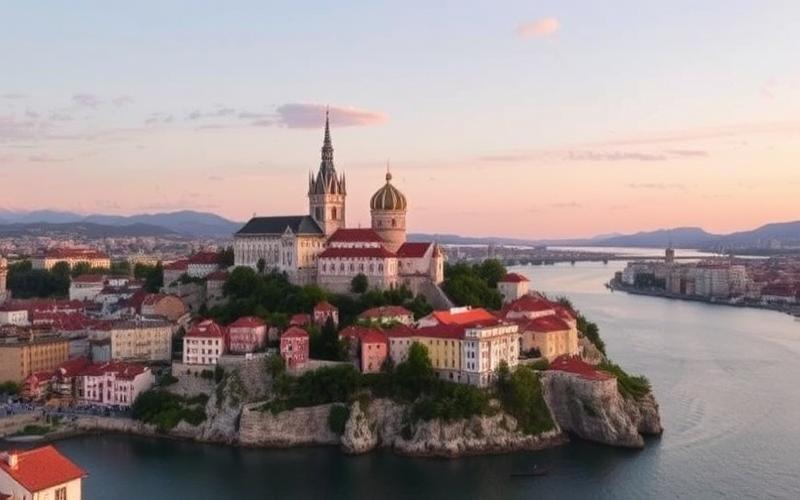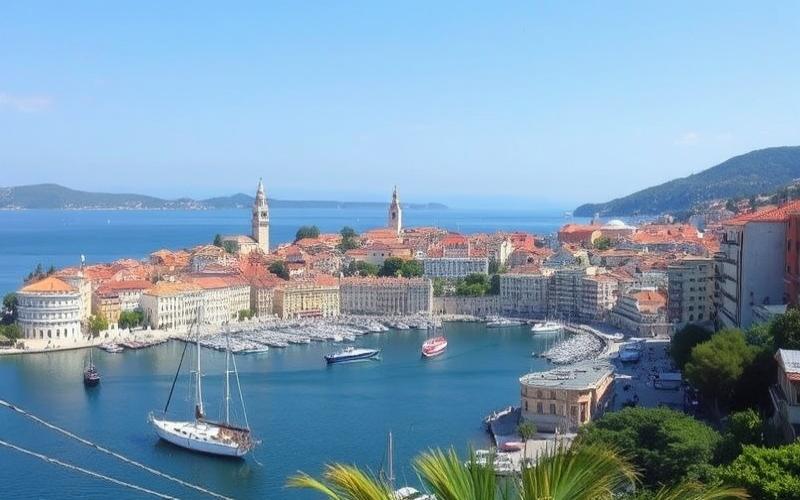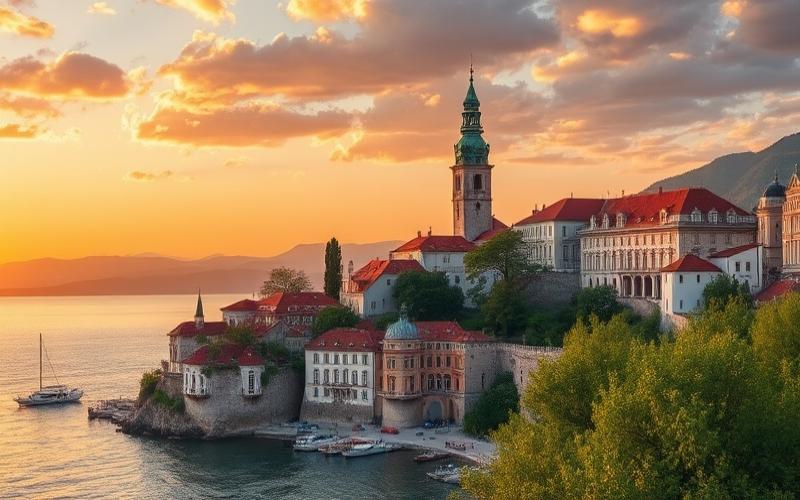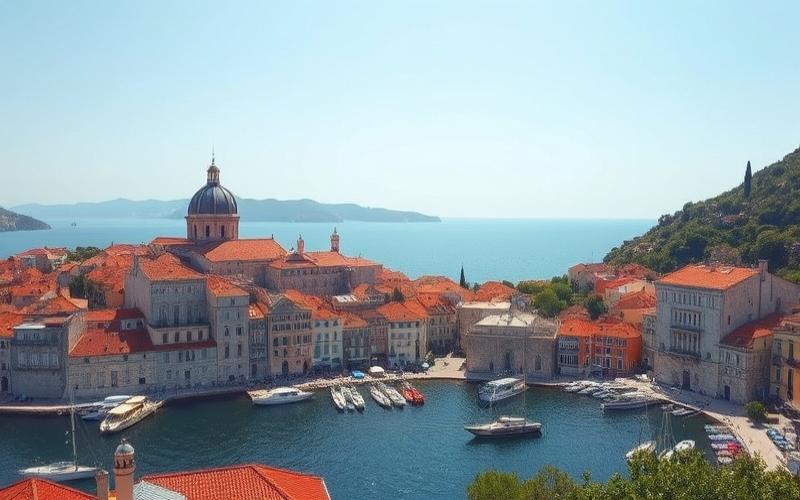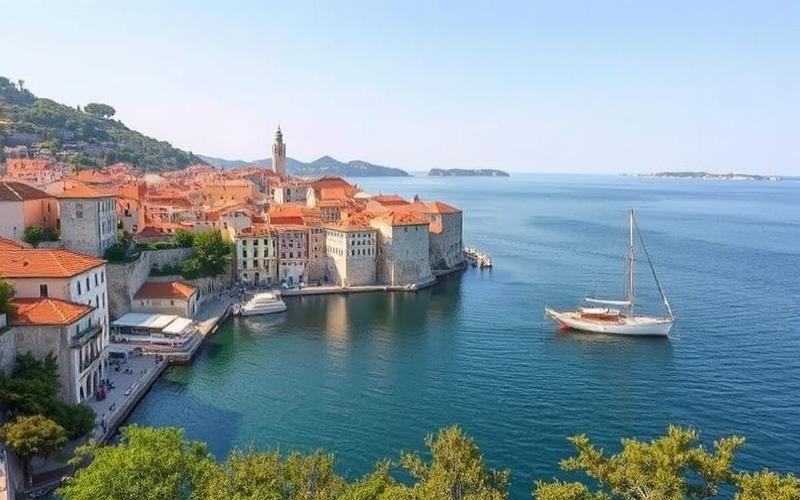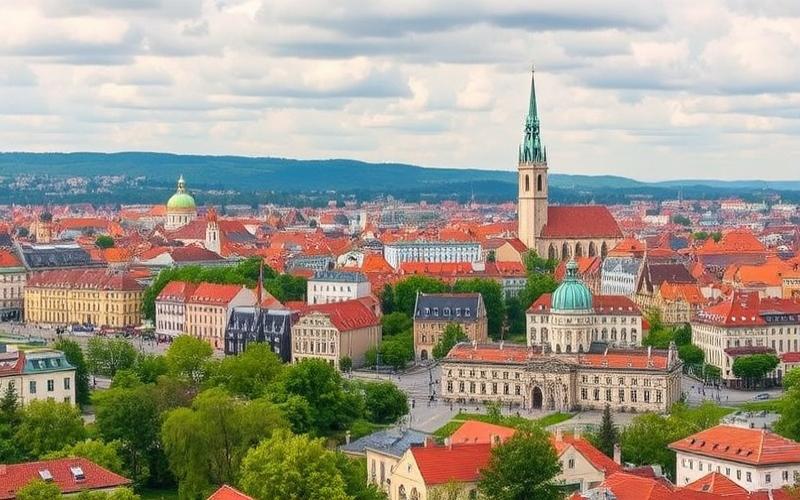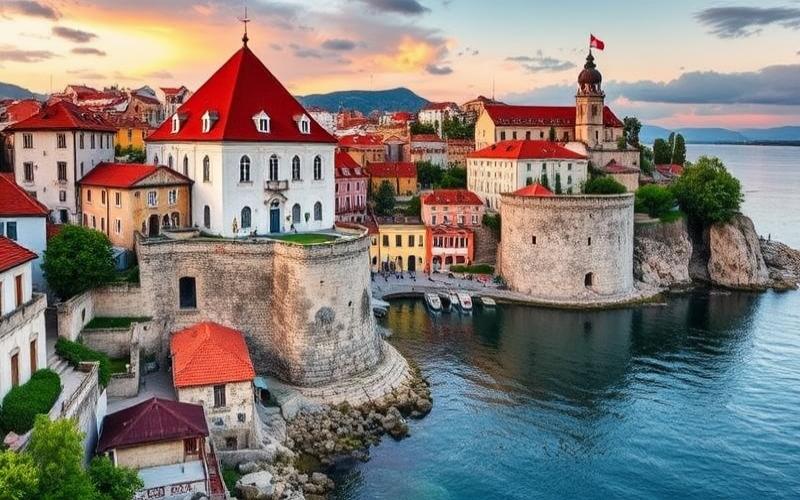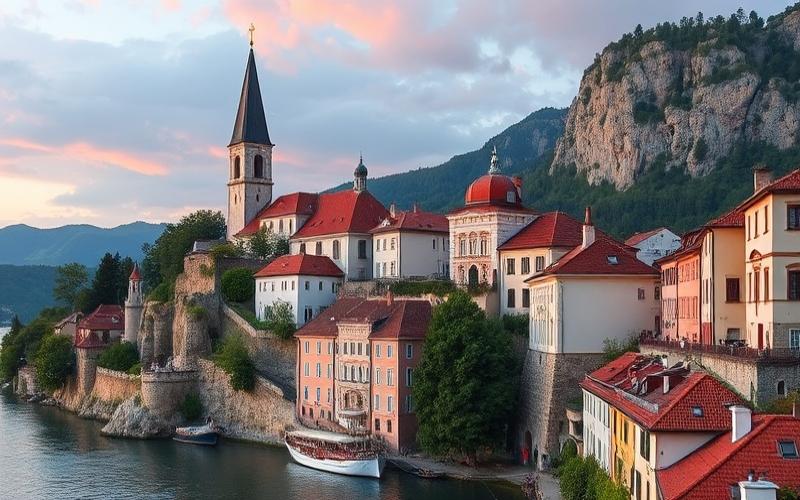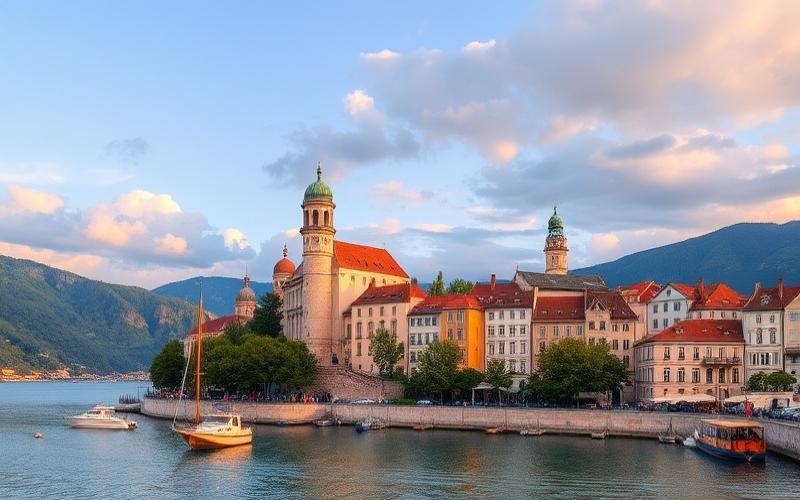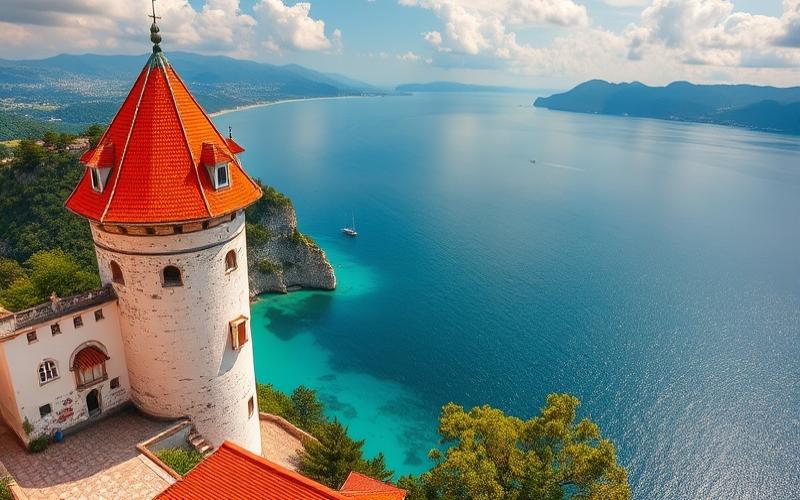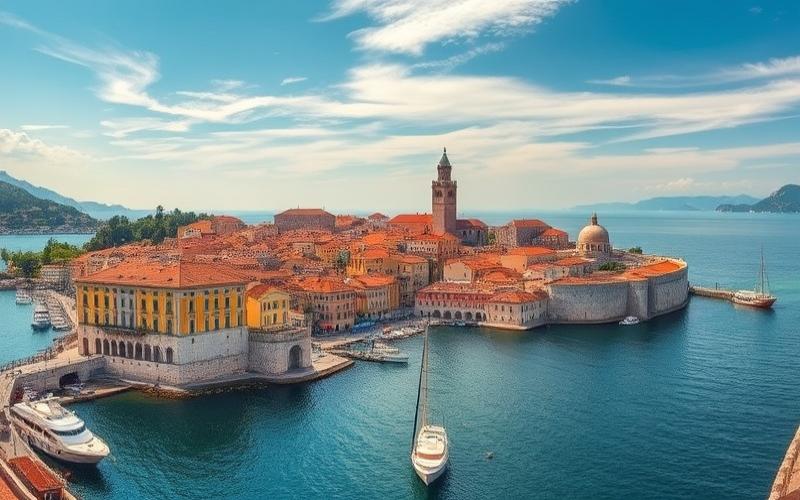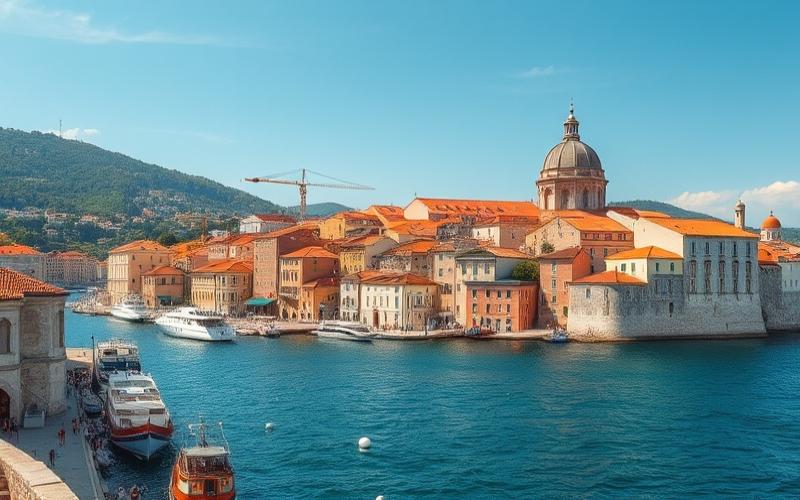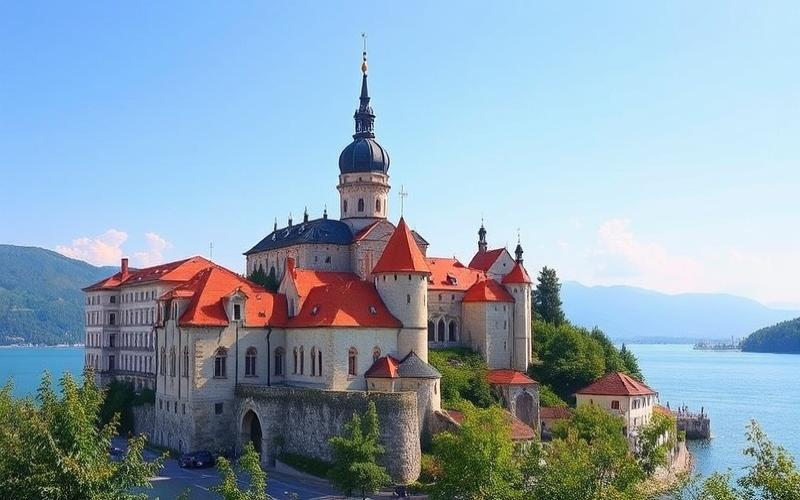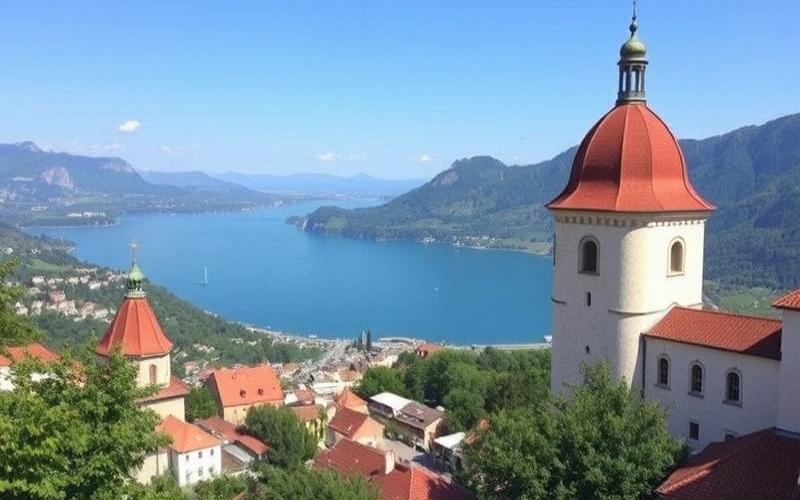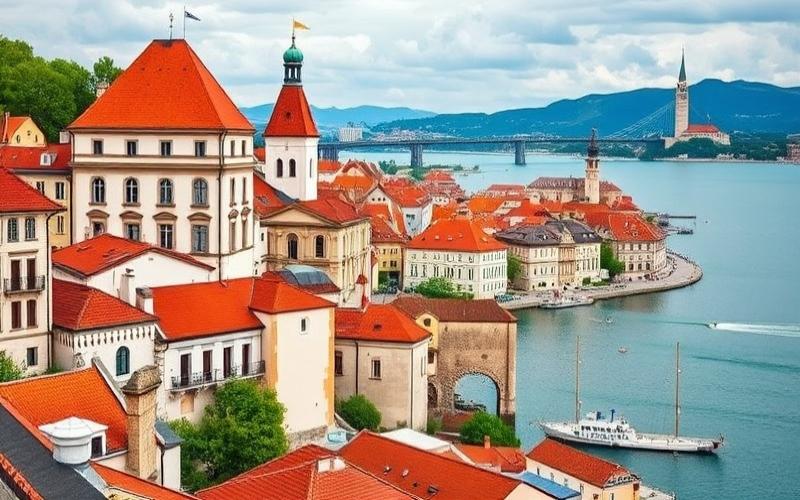
 Published on and written by Cyril Jarnias
Published on and written by Cyril Jarnias
Croatia, with its picturesque landscapes and stunning coastline, has become a premier destination for travelers worldwide, transforming its tourist appeal into a powerful driver for the local real estate market. The tourism boom has generated increased demand for residential and commercial properties, thereby redefining the country’s economic and social dynamics.
Amid growing foreign investments and rising housing prices, this phenomenon of tourist attractiveness raises essential questions about the sustainability of the Croatian real estate sector. This article explores the various impacts of tourism on real estate, highlighting the opportunities and challenges emerging on the horizon for this rapidly evolving sector.
The Tourism Boom and Its Influence on the Croatian Real Estate Market
The tourism boom in Croatia is based on several key factors:
- Natural Beauty: The Adriatic coast, its beaches, islands, and national parks attract visitors in large numbers.
- Cultural Heritage: Historic cities like Dubrovnik and Split, UNESCO World Heritage sites, and festivals enhance the appeal.
- Increased Accessibility: Since the 1990s, significant investments have been made in the highway network. Over 80% of international tourists arrive by car or bus thanks to this ease of access.
Recent statistics illustrating this growth:
| Year | International Arrivals | Total Overnight Stays (millions) | Tourism Revenue (€) |
|---|---|---|---|
| 2023 | ~20 million | ~107 | 13 billion |
| First Half 2024 | 7.2 million | 28.1 | +24.6% foreign revenue |
| Full Year 2024 | 21.3 million | 108.7 | >15 billion |
This boom has profoundly energized the Croatian real estate market:
- Increase in foreign investments, particularly in residential and rental properties in coastal regions (Istria, Dalmatia).
- Rapid growth in vacation rentals, stimulated by seasonal tourist demand.
- Notable rise in real estate prices, especially in tourist areas where land pressure is high.
Case studies and expert analyses highlight that this phenomenon comes with consequences for local residents:
Impact on Housing Availability and Accessibility:
- Approximately 91% of Croatian households are homeowners, but the situation is becoming difficult for first-time buyers facing continuous price increases.
- Housing intended for tourist rentals reduces the available stock for permanent occupancy.
Potential Challenges Raised by This Boom:
- Gentrification: Gradual replacement of local residents by wealthier or foreign populations in certain historic or seaside neighborhoods.
- Real Estate Market Overheating: Increased speculative risk with potential volatility in case of a tourism downturn or future economic crisis.
According to Tonči Glavina (Minister of Tourism), “Croatia is positioning itself as a year-round destination… with a strategic objective to develop tourism outside the summer season,” which tends to generalize these effects to all regions.
Summary List of Main Issues for Local Residents:
- Difficulty in purchasing property for young professionals
- Scarcity of affordable housing
- Pressure on urban infrastructure
Testimonies highlight that while tourism strengthens the local economy through jobs and significant tax revenues (the sector represents nearly 20% of annual transactions on the Zagreb Stock Exchange), it now requires a more sustainable model to avoid amplifying social imbalances.
Good to Know:
In Croatia, the tourism boom, fueled by its natural beauty, rich cultural heritage, and increased accessibility through low-cost flights, has profoundly transformed the real estate market. Foreign investments have poured in, leading to a 7% increase in real estate prices in 2022, with notable growth in vacation rentals in cities like Dubrovnik and Split, where an estimated 40% of properties are now dedicated to tourism. However, this boom puts pressure on local residents, making housing access more difficult and exacerbating gentrification risks in urban centers. Experts, such as economist Ivan Horvat, warn of potential market overheating, suggesting the need for stricter regulations to protect the local population and ensure sustainable tourism development.
Tourist Gems: Drivers of the Real Estate Market
Croatia’s tourist gems, notably Dubrovnik, Split, and Hvar, attract an increasing number of visitors each year thanks to their historical heritage, coastal landscapes, and vibrant cultural life. This tourist appeal directly influences the local real estate market.
Tourist Attractiveness and Impact on Real Estate
- Dubrovnik, nicknamed “the Pearl of the Adriatic,” attracts tourists from around the world for its UNESCO-listed medieval walls.
- Split charms with its historic center around Diocletian’s Palace.
- Hvar is renowned for its beaches, nightlife, and ports welcoming international yachting.
This constant flow strongly stimulates demand for real estate properties:
- Buyers primarily seek secondary residences or properties intended for seasonal rentals.
- Foreign investors are particularly active in these highly touristic areas.
Recent Real Estate Price Trends (2024–2025)
| Region/City | Average Price per m² (Apartments) | Annual Change |
| Dubrovnik-Neretva | 3,705 € | +5 % |
| Split-Dalmatia | 3,748 € | +9 % |
| Istria | 3,750 € | +8 % |
| Zagreb (Urban Center) | ~2,830–3,000 € | Variable |
In historic or waterfront neighborhoods in Split or Dubrovnik, prices can reach or even exceed 5,000 to 7,000 €/m², especially for high-end properties with sea views or direct coastal access.
The overall increase over several years is significant: approximately +96% nationwide since 2016. Seasonal rents, meanwhile, show strong gross profitability around 4.9%, encouraging the purchase of apartments intended for summer rentals.
Effects on Urban Development
The tourist dynamism has led to:
- Improvement of local infrastructure (modernized ports, renovated roads, expanded airports).
- Development of cultural and sports facilities further enhancing sought-after neighborhoods.
- A significant increase in the number of hotel and para-hotel accommodations, sometimes transforming the traditional urban landscape.
Example: In Split and Dubrovnik, there is a proliferation of apartments renovated specifically for short-term rentals via digital platforms. This indirectly contributes to the valuation of all surrounding buildings – including local businesses – but can also generate certain social imbalances.
Challenges Related to This Tourist Pressure
However, the attractiveness has its downside:
- Risk of market saturation in historic centers where supply does not always keep up with demand;
- Continuous price increases making housing access difficult for local residents;
- Pressure on public infrastructure during summer tourist peaks;
Brief list of main challenges:
- Rapid increase in housing costs
- Gradual decrease in long-term rental supply
- Partial gentrification
- Occasional overload on water/electricity/transportation
Paths Adopted or Considered by Authorities/Investors
Non-exhaustive list:
- Implementation/increase of specific taxes on vacant housing or short-term rentals in certain sensitive sectors
- Stricter regulation regarding the change of use from residential to tourist accommodation
- Planned development of compensatory social infrastructure (affordable housing reserved for residents)
- Tax incentives targeting eco-friendly renovations so that new projects also benefit local communities
Iconic regions like Dubrovnik, Split, and Hvar thus perfectly illustrate how international tourism energizes – but complicates – the Croatian real estate market. Finding a balance between global attractiveness and local quality of life remains a central challenge for these prestigious destinations today.
Good to Know:
Croatia’s tourist gems such as Dubrovnik, Split, and Hvar are powerful drivers of the local real estate market, attracting thousands of tourists each year and leading to increased demand for secondary residential properties and seasonal rentals. In 2023, real estate prices there increased notably, with a 15% rise in Dubrovnik and a 12% rise in Hvar compared to the previous year, according to recent statistics. Tourist development has also stimulated infrastructure improvement, enhancing the value of surrounding properties and contributing to the overall appeal of these regions. However, this tourist pressure generates challenges, including market saturation and rising costs for local residents. To address these difficulties, local authorities are considering stricter regulations on seasonal rentals, while some investors favor sustainable development projects to balance tourist and residential interests.
The Rise in Real Estate Prices Under the Effect of Tourism
In recent years, Croatia has experienced a marked increase in real estate prices, particularly in popular tourist areas such as Dubrovnik, Split, and Istria. This dynamic is explained by the combination of strong tourist demand and growing interest from foreign investors.
Recent Evolution of Real Estate Prices in Croatia (2023–2025)
| City/Region | Average Price per m² (2023) | 3-Room Apartment Price | Estimated Monthly Rent |
|---|---|---|---|
| Split | 4061 € | 365,000 € | 1300 € |
| Zagreb | 2987 € | 350,000 € | 1100 € |
| Rijeka | 2661 € | 275,000 € | 1000 € |
- The overall housing index reached a historic record of 214.18 points in Q1-2025, with annual growth exceeding 13%, after already more than 10% at the end of the previous year.
- The strongest increases concern the Adriatic coast where rental pressure is maximum.
Main Factors of This Increase
- The international tourism boom has generated increased demand for:
- Short-term rentals intended for seasonal visitors.
- Direct acquisition of secondary residences or rental investments by foreigners, attracted by the yield and perceived stability of the Croatian market.
- Massive presence on platforms such as Airbnb intensifies competition for available properties: a growing number of homes once reserved for residents are now rented short-term for tourist purposes.
Effects on the Local Market and Consequences for Residents
- Significant decrease in available stock for long-term rental or conventional residential purchase.
- Accelerated rise in rents and prices per square meter along the entire Adriatic coast as well as in Dubrovnik, Split, and Rovinj/Istria.
- Gradual erosion of local real estate purchasing power: some households find themselves excluded from city centers or forced to leave their native region due to lack of affordable housing access.
Direct Consequences Observed
Continuous increase in the share of non-resident owners in some coastal cities (up to a quarter or even a third according to local studies).
“Since my neighbor started renting her apartment on Airbnb, she earns in three months what I make in a whole year as a local employee. It’s now impossible for my adult children to rent here.”
— Testimony collected from a resident near the historic port of Split
Government Policies Implemented
- Introduction/strengthening of specific taxes on tourist rental income
- Increased regulation regarding obtaining/renewing Airbnb licenses
- Municipal attempts (notably in Dubrovnik) to limit the maximum number of apartments allowed for short-term rental
But these measures still struggle to durably reverse the trend as long as tourist influx remains high.
Future Perspectives
The near future suggests a continuation – albeit slowed – of this upward dynamic if tourist flow remains stable or even progresses. However, increased regulatory tightening could slightly curb this overheating in some highly exposed coastal agglomerations. The tension between international attractiveness and local social preservation will therefore remain central in the future evolution of the Croatian real estate market.
Good to Know:
The rise in real estate prices in Croatia, particularly in popular tourist destinations like Dubrovnik, Split, and Istria, is notable, with prices having increased significantly in recent years. This boom is mainly due to the massive influx of tourists, which has intensified the demand for housing for short-term rentals via platforms like Airbnb, as well as for acquisitions by foreigners wishing to invest in secondary residences. This pressure on the local real estate market has led to an increase in rents and property purchase prices, complicating housing access for local residents whose purchasing power has not kept up with this inflation. Government policies have been implemented to regulate this trend, with mixed results, according to presented case studies. As tourism continues to grow, the real estate market could see an exacerbation of this dynamic, unless more impactful measures are adopted.
Rental Investment in Croatia: A Flourishing Opportunity
The spectacular boom in tourism in Croatia has profoundly transformed the rental investment market, stimulating demand for seasonal rentals and generating significant capital flows into real estate in tourist areas.
Positive Effects on Rental Investment
- Croatia has established itself as one of Europe’s most sought-after destinations, with a record of over 21 million arrivals in 2024 and more than 100 million overnight stays recorded.
- Tourism represents about 20% of the national GDP, reinforcing the profitability of rental investments, especially in coastal and island regions.
- Real estate prices in tourist areas have experienced sustained growth, driven by strong rental demand during the high season.
Recent Statistics on Rental Market Growth
| Year | Tourist Arrivals | Recorded Overnight Stays | Rental Market Growth |
| 2023 | 16.85 million | Data not specified | Notable increase |
| 2024 | 21.35 million | 108.7 million | Significant growth |
| May 2025 | 1.51 million | Monthly data | Strong seasonal demand |
- Areas like Dubrovnik, Cavtat, and Mljet are among the most sought-after, with Dubrovnik regularly exceeding one million tourists annually and saturation of accommodation capacities during the summer.
Government Policies and Incentives for Foreign Investors
- Croatia has implemented policies favorable to real estate investment:
- Facilitation of property purchases for European Union nationals.
- Local tax incentives in some municipalities to encourage the renovation of old homes for tourist purposes.
- Public investments in infrastructure (highway network, port modernization), facilitating access to coastal and island areas.
- The government is also considering measures to encourage off-season tourism, to smooth demand and alleviate pressure on infrastructure.
Particularly Lucrative Regions for Rental Investment
- Dubrovnik: High profitability, but challenges of overtourism and strict regulation (quotas, high tourist taxes).
- Istria (Rovinj, Pula): Growing attractiveness, pronounced seasonality, good yields.
- Split and Central Dalmatia: Stable demand, facilitated access by highway and maritime connections.
- Islands like Mljet, Hvar, Brač: Growing popularity, expanding rental supply, rising prices.
Challenges for Investors
- Strict regulation in the most touristic cities, especially Dubrovnik, with visitor quotas and restrictions on short-term rentals.
- Very marked seasonality: The majority of rental income is concentrated between June and September, making annual profitability difficult without diversification into off-season tourism.
- Environmental and social pressure: Overtourism, rising local real estate prices, strain on natural resources.
- Increase in acquisition prices in flagship destinations, which can reduce gross yield.
Future Perspectives
In light of evolving tourism trends, rental investment in Croatia presents promising prospects, subject to adaptation to new challenges.
- Diversification of the tourist offer and promotion of off-season tourism could stabilize yields and mitigate seasonality.
- Regulatory policies, if well-calibrated, will preserve destination attractiveness while protecting the environment and local communities.
- Innovation in sustainable tourism and digitalization of rental management should continue to energize the market, despite increased competition and strengthened regulatory vigilance.
Good to Know:
The tourism boom in Croatia, with annual visitor growth reaching over 5% in recent years, has catalyzed a flourishing of opportunities for rental investment, particularly in tourist areas such as Dubrovnik, Split, and Istria. The rental real estate market in these regions recorded an 8% increase in 2022, supported by attractive government policies, including tax incentives for foreign investors. However, challenges remain, such as strict real estate regulation and marked tourism seasonality, which could complicate annual profitability. Nevertheless, with the continuous increase in tourist flows and prospects for expanding the tourist season, rental investments in Croatia are potentially very lucrative in the long term.
Disclaimer: The information provided on this website is for informational purposes only and does not constitute financial, legal, or professional advice. We encourage you to consult qualified experts before making any investment, real estate, or expatriation decisions. Although we strive to maintain up-to-date and accurate information, we do not guarantee the completeness, accuracy, or timeliness of the proposed content. As investment and expatriation involve risks, we disclaim any liability for potential losses or damages arising from the use of this site. Your use of this site confirms your acceptance of these terms and your understanding of the associated risks.

